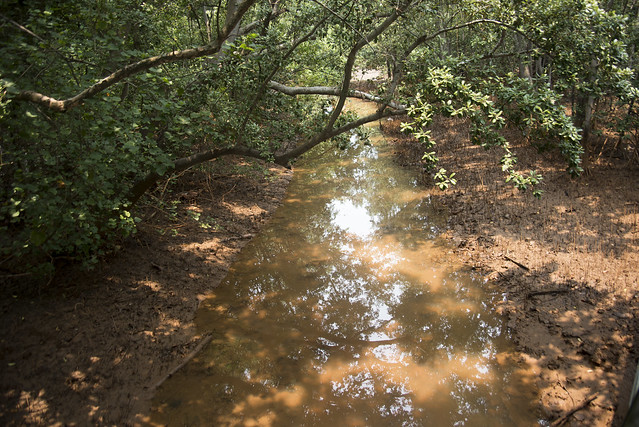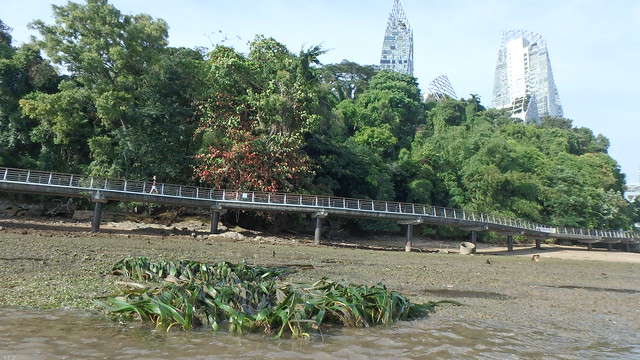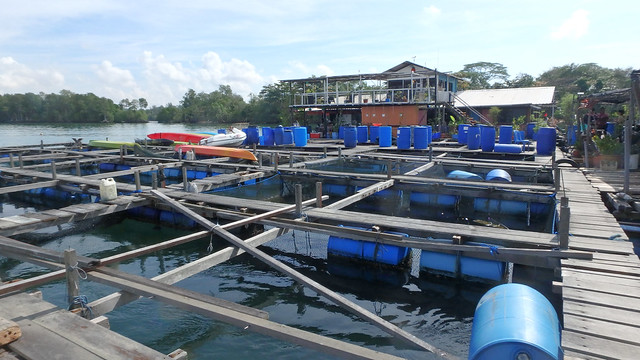Here's some planned activities by NParks!
- 3 Feb (Sat): World Wetlands Day - Sungei Buloh Wetland Family Adventure
- 3 Feb (Sat): What's in my mangroves?
- 4 Feb (Sun): Bird Watching at Pekan Quarry, Pulau Ubin
- 4 Feb (Sun): World Wetlands Day - Pasir Ris guided walks
- 4 Feb (Sun): World Wetlands Day - Pasir Ris Mangrove Clean Up
- 4 Feb (Sun): Chek Jawa intertidal guided tour
- 4 Feb (Sun): Tour of St John's Island Trail
- 3-4 Feb (Sun): World Wetlands Day activities by NParks
How are urban wetlands important to us?
from Urban wetlands: prized land, not wasteland from World Wetlands Day
Reduce flooding
Wetlands act as giant sponges that absorb flood waters. Rivers, ponds, lakes and marshes soak up and store heavy rainfall. In coastal cities, saltmarshes and mangroves work as a buffer against storm surges.
Check out this awesome 3 year time lapse video shared by Brice Li of the transformation of a concrete canal into a wetland that absorbs flood waters and also provides recreational space.
Replenish drinking water
Groundwater aquifers, rainwater and rivers are the source of almost all drinking water. Wetlands filter the water that seeps into aquifers, helping to replenish this important water source. Protecting rivers and limiting harmful run-off also helps safeguard the water supply.
Filter waste and improve water quality
The silt-rich soil and abundant plants in wetlands function as water filters, which absorb some harmful toxins, agricultural pesticides and industrial waste. Urban wetlands also help treat sewage from households.
 |
| 'Orange waters' flowing through Berlayar Creek mangroves are clear by the time it reaches the sea. |
Improve urban air quality
Wetlands radiate moist air thanks to their high water levels and lush plant life. This naturally cools the air in the local surroundings; a relief both in tropical cities and in extremely dry climates.
 |
| Mangroves, coastal forest, seagrass meadows at Berlayar Creek in the heart of the city. |
Promote human well-being
When preserved as green spaces in cities, wetlands offer residents a space for recreation and access to diversity of plant and animal life. Studies confirm that interacting with nature reduces stress and improves our health.
 |
| Pasir Ris mangrove boardalk, just minutes from an MRT station easily visited by families! |
Enable people to earn a living
Many types of fish spawn and breed in wetlands, making them popular fishing grounds. Wetlands provide reeds and grasses for weaving, medicinal plants and fruits; all valuable goods for local residents. Wetlands also attract tourism, another important source of jobs.
 |
| Singapore's 120 offshore fish farms depend on nearby mangroves to provide good water quality and marine life to feed their farmed fishes. |
What can we do for our urban wetlands?
from Retain and restore: practical ways cities can manage and preserve urban wetlands by World Wetlands Day
- Involve local residents in wetland planning
- Integrate wetlands into policy and planning
- Restore urban wetlands
- Reduce excessive water consumption and harmful runoff
- Organize community wetland clean-ups
What is World Wetlands Day about?
from World Wetlands Day
2 February each year is World Wetlands Day. This day marks the date of the adoption of the Convention on Wetlands on 2 February 1971, in the Iranian city of Ramsar on the shores of the Caspian Sea.
Each year since 1997, the Ramsar Secretariat has provided materials to help raise public awareness about the importance and value of wetlands.
What is the Ramsar Convention?
from the Ramsar website
The Convention on Wetlands, called the Ramsar Convention, is an intergovernmental treaty on conservation and wise use of wetlands.
What is a Ramsar sites?
Worldwide, many important wetlands are designated a Ramsar site. From the Ramsar website, features of such sites include:
- Contains rare or unique example of a natural or near-natural wetlands
- Supports vulnerable, endangered, or critically endangered species.
- Supports populations important for the biological diversity of the region.
- Supports species at a critical stage in their life cycles, or provides refuge during adverse conditions.
- Regularly supports 20,000 or more waterbirds.
- Supports 1% of the individuals in a population of one species or subspecies of waterbird.
- Supports a significant proportion of indigenous fish subspecies.
- An mportant source of food for fishes, spawning ground, nursery and/or migration path on which fish stocks, either within the wetland or elsewhere, depend.
- Regularly supports 1% of the individuals in a population of one species or subspecies of wetland-dependent non-avian animal species.What is the status of the Ramsar convention?
- From the Ramsar websiteNumber of Contracting Parties: over 160
- Number of sites designated for the Ramsar List: 2,200
- Total surface area: 214,250,306 hectares
Does Singapore have a Ramsar site?
Sadly, Singapore is not listed as a Contracting Party and has no designated Ramsar site.
This article first appeared on the wild shores of singapore blog.



No comments:
Post a Comment